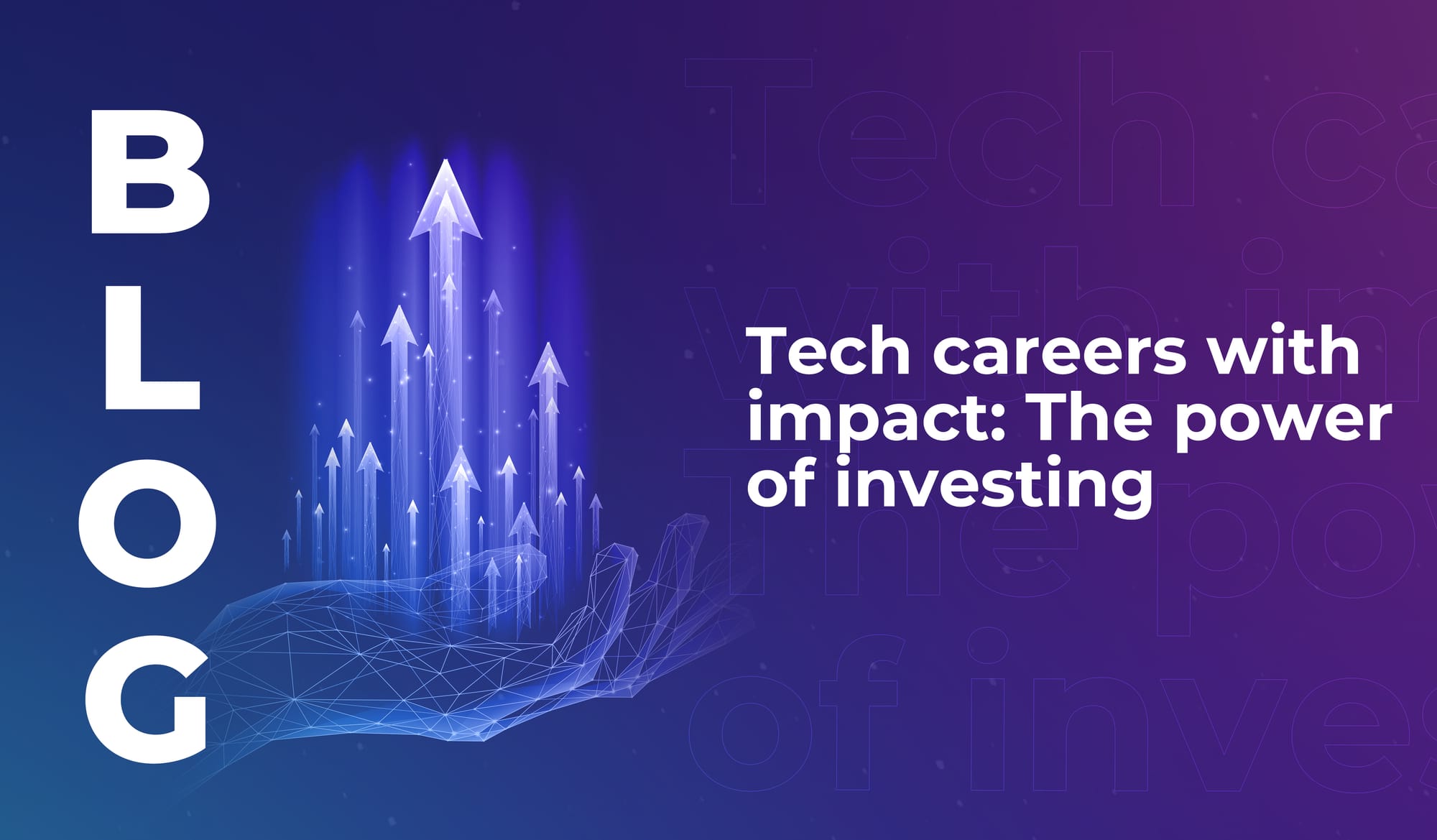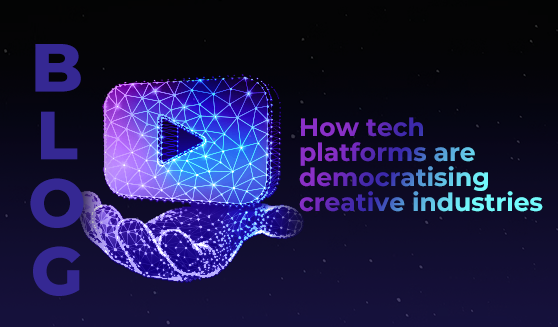
Tech careers with impact: The power of investing
If you’ve ever thought about becoming a tech investor, read this – learn why investors are the quiet force shaping the future of the industry.


We’ve written before about the way that connectivity and access to digital tools can enable people from a wide variety of backgrounds to exercise their entrepreneurial spirit. With low-cost, high quality technological tools, almost anyone can start a business in minutes.
And the same goes for people working in creative industries and the arts. We write this with a caveat: we know that some aspects of the digital transformation have made it harder for creatives to collect revenue from their work. We know there are challenges, and there’s work to be done to ensure that the arts and creative work is valued in societies all around the world.
But that said, we wanted to highlight some of the unexpected ways that creatives are using technology to their advantage. Because it demonstrates the adaptability of human beings – and proves there are myriad ways for people to live and work with tech.
Global tech news outlet Rest of World recently interviewed Nigerian filmmakers, including Ibrahim Yekini – an actor, producer, and director, who starred in the 2023 Netflix movie Jagun Jagun. Instead of pitching to the likes of Netflix and Amazon, Yekini releases his own films exclusively on YouTube. And it’s going well: his biggest films have had more than 1.5 million views on the platform.
Why has he chosen this route? Yekini told Rest of World that YouTube minimises the risk of CD piracy and enables him to control how his work is distributed – and so protects his production’s income potential.
Similarly, Seun Oloketuyi – a popular Nigerian filmmaker – shifted to YouTube for all his movie releases in 2022 in response to years of fighting against piracy.
And in the same article, film critic Oris Aigbokhaevbolo said, “For low-budget productions, YouTube has the most impact. For those who have built a following on the platform, there’s no real revenue sharing, [unlike] cinemas.”
As a result of a growing number of filmmakers moving away from big film companies and opting for YouTube as their primary movie distribution platform, YouTube channels are now competing closely tenaciously with Netflix and Amazon. One Nigerian YouTube film channel, ApataTV+, has over 1.69 million subscribers.
It used to be that musicians and bands needed a record label if they wanted to make records, go on tour, and make a living from music.
But streaming platforms have changed this – and now, a growing number of musicians are building a large fanbase and generating significant profit without the backing of a major label. Some go it alone, and some sign with smaller grassroots labels; but arguably, the potential for success now relies far more on talent than on your ability to woo record label execs.
London-born multi-instrumentalist Jacob Collier, for example, now sells out world tours every year, has won five Grammys, and is often described as the musical genius of his generation. And he started on YouTube: sharing complex split-screen covers of popular songs that he made in his bedroom. Like this cover of Stevie Wonder’s Isn’t She Lovely which garnered over 3.8 million views.
And American rapper, poet and producer Noname, who has built a cult following for her music – without ever signing to a label. She used the proceeds from her first record to pay for her more recent album, and told NPR, “I just personally like the role of an entrepreneur. I grew up in that framework because my mother owned her own bookstore, my grandparents own their own landscaping company.”
Writers, too, are leaning into the power of tech to change the power balance in the publishing industry – and take control over their own work.
One notable platform is Substack. Founded in 2017 by tech entrepreneurs Chris Best, Jairaj Sethi, and Hamish McKenzie, Substack is specifically positioned as a publishing disruptor. It’s designed to enable authors to grow their own audience, communicate personally and authentically with them, choose what they want to write, and generate income from reader subscriptions – all while retaining full ownership of their work.
This is in stark contrast to the traditional publishing industry, which has a reputation for being slow to change, and challenging for diverse voices to make themselves heard.
And Substack works. The top 27 highest-earning email newsletters on the platform generate over USD $22 million in revenue each year, and at least five Substacks make their authors more than $1 million annually, as reported by Press Gazette.
Even famous novelists – including Salman Rushdie, Chuck Palahniuk, and George Saunders – have migrated their author platforms to Substack, where they publish serialised fiction works, essays, and writing advice.
The most exciting thing (in our opinion, at least) about the emerging relationship between art-makers and technology is that it’s constantly evolving, adapting, and growing. You don’t just make a tech platform and put it out there for creatives to use in a specific, predetermined way.
You make the platform and then you watch what happens: and the results will always surprise you. Because no matter the tools they’re working with, creatives will continue to be creative – and they give as much back to technology and developers as tech gives to them.

If you’ve ever thought about becoming a tech investor, read this – learn why investors are the quiet force shaping the future of the industry.

Tech generalists will enable emerging technologies to integrate across industries and societies in meaningful ways. We still need specialists – but we also need big-picture people.

Discover three tech sectors facing a talent shortage this year. Could you find your ideal role in a high-demand sector like cybersecurity, cloud computing, or artificial intelligence?

If you’ve ever thought about becoming a tech investor, read this – learn why investors are the quiet force shaping the future of the industry.

Tech generalists will enable emerging technologies to integrate across industries and societies in meaningful ways. We still need specialists – but we also need big-picture people.

Discover three tech sectors facing a talent shortage this year. Could you find your ideal role in a high-demand sector like cybersecurity, cloud computing, or artificial intelligence?